Maureen O'Hara, who was born in Dublin on August 17, 1920, opened up about her glamorous life, "The Quiet Man," John Wayne, Alfred Hitchcock, and more in this 2014 interview with Nick Thomas.
O'Hara died the following year on October 24, 2015 in Boise, Idaho.
Despite roles in over 50 feature films spanning five decades, including big-screen classics such as “The Hunchback of Notre Dame” (1939), “Miracle on 34th Street” (1947), and the original “The Parent Trap” (1961), Irish screen legend Maureen O’Hara was never nominated for a competitive Oscar.
However, in November 2014, the Academy of Motion Picture Arts and Sciences recognized the fiery, redheaded, Irish actress’s lifetime achievement in film with an Honorary Oscar during the 6th Annual Governors Awards.
“It was very exciting news and I’m so proud to be recognized by my peers,” said O’Hara from Boise, Idaho, where she lived with family.
“I almost didn’t believe it when the president of the Academy called, because I thought the awards were over and done with for this year."
O’Hara was one of the most beloved classic film actresses, noted for playing feisty females and often alongside John Wayne in five films such as “McLintock!” (1963), John Ford’s “Rio Grande” (1950) and, of course, “The Quiet Man” (1952).
Stunningly beautiful throughout her career, O’Hara says she managed to avoid romantic entanglements with her leading men.
“They were just dear friends,” she said, especially of Wayne with whom she appeared in five films. “He was a kind, wonderful man.”
On-screen, however, Wayne could be rough. He dragged her across the Irish countryside in “The Quiet Man,” then repeated the harsh on-screen treatment a decade later in a chase through the Arizona Territory’s dusty streets in “McLintock!”
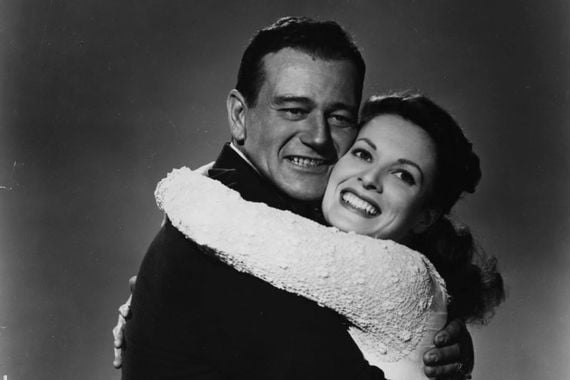
John Wayne and Maureen O'Hara (Getty Images)
Left bruised after both ordeals, O’Hara didn’t object. In fact, throughout her career, she performed most of her own stunts, including a dangerous fall backward from a ladder into a horse trough in “McLintock!”
“During filming, John Wayne was actually concerned when I was up on the ladder and yelled ‘Get down you damn fool, you’re going to kill yourself!’ But I did the stunt anyway. It was rather silly risking permanent injury or death for the sake of a movie, but there was a thrill in it. I did some dangerous things in my career, and usually prayed that I would come through safe and sound.”
Deeply religious, O’Hara has remained delightfully down to earth.
In a scene from “The Hunchback of Notre Dame,” after being rescued from the gallows by Charles Laughton, his stunt double lifts O’Hara high over his head atop the church tower.
“It scared the hell out of me,” she recalled. “With no protective netting and I would have been killed if I’d fallen. But I’m pretty tough, and probably would have cracked the cement!”
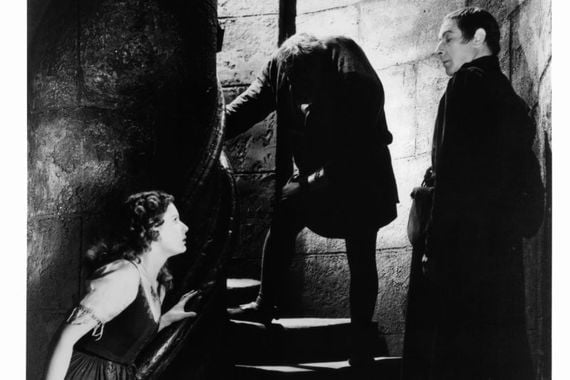
Maureen O'Hara in The Hunchback of Notre Dame. (Getty Images)
That tough, strong-willed, fearless character was evident even in her first major role, Alfred Hitchcock’s 1939’s “Jamaica Inn," which helped set the stage for the strong female characters she would play throughout her career.
“It would have been hard for me to be anything else because I am close in character to the women I played,” said O’Hara. “While I love being sentimental, I am a hardheaded woman, too!”
“Jamaica Inn” was O'Hara's last film before she left the UK for Hollywood. Although critics slammed it, audiences flocked to theaters.
“It was a tremendous success in Canada, England, and the US,” noted O’Hara. “Hitchcock was fabulous to work with. But he couldn’t help it. He had the gift of genius from the heavens and gave the world wonderful stories and movies.”
“Jamaica Inn” also starred Laughton, who discovered O’Hara during a screen test and was enamored by her beauty, especially her expressive, green eyes.
“I hope he also saw a talented actress in me with the potential for a long career, even though I was a real smart-arse Irish woman!” she said.
Actress Stefanie Powers recognized that talent when, at age 20, she joined the cast of “McLintock!” as O’Hara’s daughter.
“I was beginning my career,” recalled Powers, who starred in the 80s TV series “Hart to Hart.” Maureen’s instinctive timing made her the perfect John Ford heroine. The chemistry she had with John Wayne was so extraordinary, she made acting look easy. Ensemble acting like that is often overlooked at Oscar time.
“She stayed consistent with the roles she played and didn’t really have that single dramatic role that gets the Academy’s attention. Had she played against type, she probably would have won an Oscar long ago.”
Other co-stars have praised O’Hara for her professionalism on set.
Rick Lenz costarred with O’Hara and Jackie Gleason in the little-known 1970 film “How Do I Love Thee?”
“Halfway through the filming, Jackie started drinking pretty heavily,” recalled Lenz. “Shelley Winters was also in the film and I remember her asking Jackie, ‘Are you even trying?’ That’s not something I would have said to Jackie Gleason! But Maureen was kind and patient with him and far too professional to treat him any other way.”
After publishing her autobiography "'Tis Herself" with John Nicoletti in 2005, O'Hara said she was enjoying retirement surrounded by family.
“It’s nice to get awards, but they don’t compare to the award God gives you when he gave you a family," O'Hara said.
Her grandson and caregiver Conor Fitzsimons, speaking from his Idaho home where he lived with O'Hara, said: "She’s always been a hoot and I was actually raised by her.
“In my 20s and 30s, we also spent time together when she lived in Ireland and in the Virgin Islands. I drank my first whiskey with her and she took me to my first black-tie event. She’s always been my best friend and having her here is like having an old roommate come home.”
Maureen O'Hara sadly passed away on October 24, 2015, in Boise, Idaho where she was cared for by her family.
Below, learn more about Maureen O'Hara on the show "This is Your Life:"
*Nick Thomas teaches at Auburn University at Montgomery, AL, and has written features, columns, and interviews for over 450 magazines and newspapers. For more interviews with classic film and TV stars, visit his website TinselTownTalks.
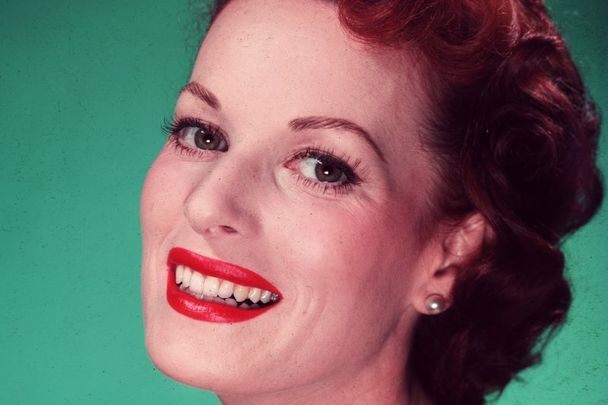
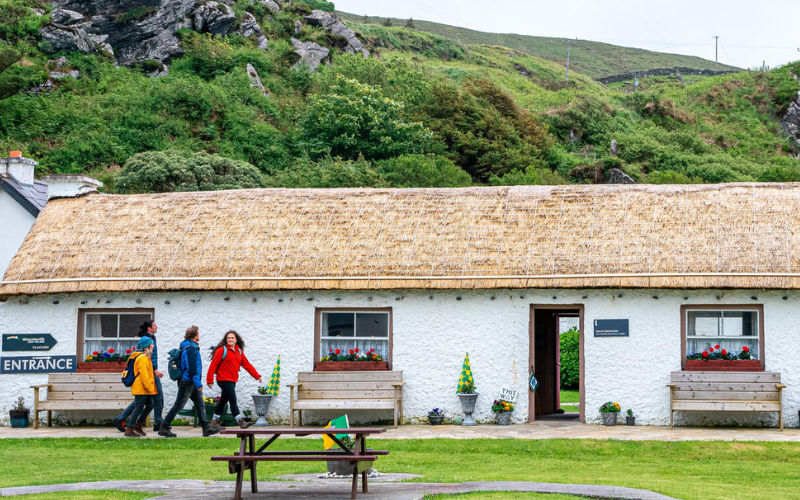

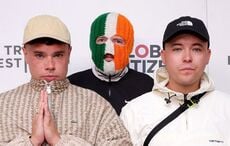
Comments